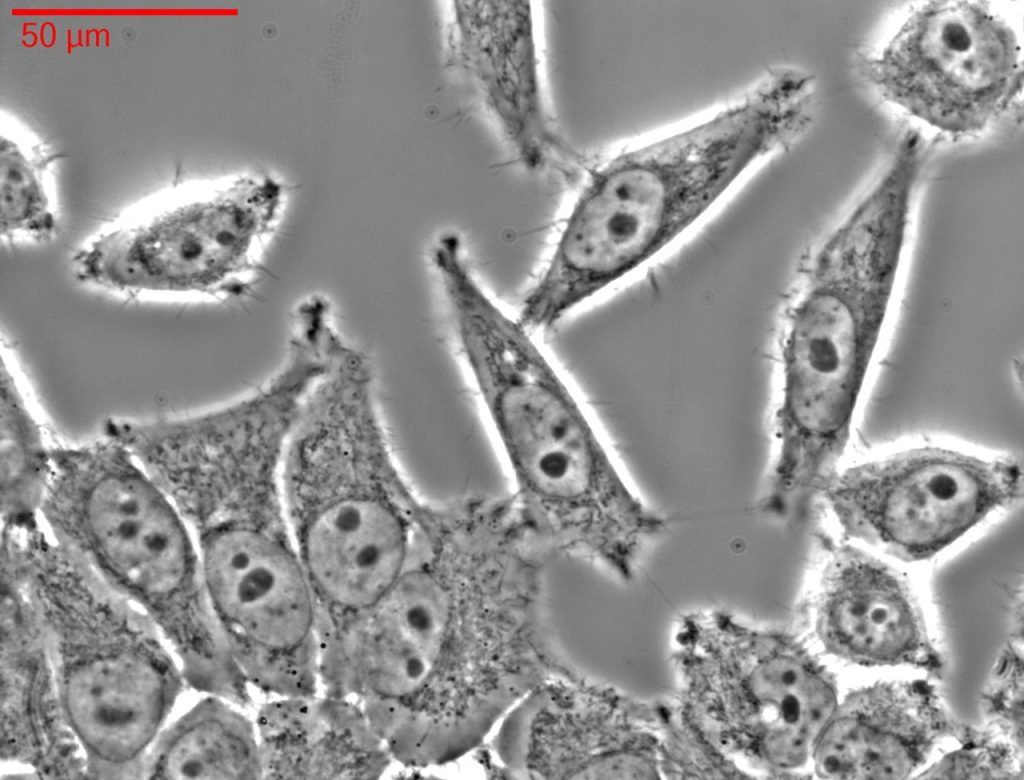3.3 Boffin questions
 Estimating large numbers
Estimating large numbers
- How many proteins are in a HeLa cell?

Use the following data to estimate the number of protein molecules in a HeLa cell:
- Protein mass per volume ≈ 0.3 g. ml-1
- Mass of a typical amino acid ≈ 100 Da
- Average length of a protein ≈ 400 amino acids
- Volume of a HeLa cell ≈ 2,000 µm3
- Avogadro’s number = 6 × 1023
Do not be afraid of the large numbers here! Work through this methodically and make sure you write down the units at each step.
Side Bar – The symbol, Da, refers to daltons (named after the English chemist and physicist, John Dalton) which is also known as the atomic mass unit. It is defined as 1/12th of the mass of a carbon-12 atom which is approximately equal to 1.660 x 10-27 kg. The mole is a unit of substance that was originally defined so that the mass of one mole of a substance, measured in grams, would be numerically equal to the average mass of one of its constituent particles, measured in daltons. So, carbon-12 (6 neutrons and 6 protons) is 12 Da and therefore the mass of one mole of carbon-12 is approximately 12 g. The molar weight of large molecules such as proteins or protein complexes can be expressed in kilodaltons (kDa) or megadaltons (MDa) as appropriate.

